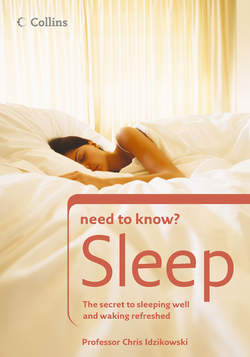Читать книгу Sleep: The secret to sleeping well and waking refreshed - Prof. Idzikowski Chris - Страница 16
Clocks, cycles and rhythms
ОглавлениеWe are all governed by a 24-hour cycle called a ‘circadian rhythm’, taken from the Latin words circa, meaning ‘around’, and die, meaning ‘day’. Circadian rhythms underpin everything, from hormone production to when we feel like getting up or going to bed. Our body temperature has a 24-hour rhythm too; minimum body temperature usually occurs around 4 a.m., maximum body temperature around 10-11 p.m. Sleep also roughly follows a 24-hour rhythm.
For most of us, a typical cycle means falling asleep between around 11 p.m. and midnight, and waking up between 6 a.m. and 8 a.m., indicating that we are biologically programmed to be able to fall asleep and wake up at around those times. However, not all clocks keep the correct time, and the biological clock is no exception. It generally runs a little ‘slow’ but is kept to the right time relative to light and darkness by ‘synchronizing’ cues called ‘zeitgebers’. Dawn light is one of the most important and well-understood cues that our body responds to, but the onset of darkness (which stimulates the production of melatonin from the pineal gland) also has a role to play. Other zeitgebers are exercise, mealtimes, social interactions, sounds, and possibly changes in temperature. Sleep itself may be a weak zeitgeber.
